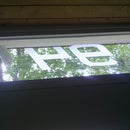Introduction: 18 Pin PIC Development Board
I have long been playing with Microchip PICs but have always made do without some form of development board. To that end I have designed a basic board that I was hoping to get some input for. I haven't yet made this board as I am waiting for some kit to turn up to finish it off and make it, however I thought others may be in a position to use or modify it.
Step 1: Project Requirements
The requirements for me were to have 8 LEDs and switches that were not tied to a port or pin, but had jumpers to allow full selection of which port/pin to connect to. Optional use of an external crystal, so the option of using a PICs internal RC oscillator was possible. Finally a ICSP header so that the PIC wouldn't need removal to be programmed.
The board needed to be single sided as I don't have the facilities or patience to go double!
The ICSP header circuit was used from Best Microcontroller Projects.
The board needed to be single sided as I don't have the facilities or patience to go double!
The ICSP header circuit was used from Best Microcontroller Projects.
Step 2: Design Files, Parts List, Construction Guide
I have attached the Eagle files for the design.
With the board, to be able to maintain a single side, there are seven wire links. I have tried to keep them short so you should be able to use wasted legs from the resistors etc.
The parts list:
R1-R8 150R (based on 2V forward voltage and 20mA)
R9-R16 1k
R25-28 10k
C1,C2 20pF Ceramic
C3,C4 10uF 16v Electrolitic
D1,D2 1N4148
IC1 PIC 16F62(7/8) (in DIL Socket)
IC2 7805
SW1-SW9 Push to make switch (RS part 378-6729)
SV5,7,8 are pin headers, the rest are female to allow single core wire to be inserted for linking.
Construction should be reasonably simple should you have experience soldering. I think there are guides on here to help you with that if you haven't. Starting with the smaller components work up to the larger ones. I would start with the links, R26-28, D1 & 2, then the switches & DIL socket, remaining resistors, crystal, capacitors, LEDs (noting polarity), SV headers and sockets, IC2 and the DC Jack.
Once built, before adding the PIC, plug in a 9-12v power supply and check that you have 5v on output of IC2 and on pin 14 on IC1 socket and nothing on any other pin. If you haven't got 5v check soldering for dry joints on the DC Jack, IC2 and IC1. If you have 5v on any other pin on IC1 check for soldering linking tracks or poor etching where tracks are still connected.
With the board, to be able to maintain a single side, there are seven wire links. I have tried to keep them short so you should be able to use wasted legs from the resistors etc.
The parts list:
R1-R8 150R (based on 2V forward voltage and 20mA)
R9-R16 1k
R25-28 10k
C1,C2 20pF Ceramic
C3,C4 10uF 16v Electrolitic
D1,D2 1N4148
IC1 PIC 16F62(7/8) (in DIL Socket)
IC2 7805
SW1-SW9 Push to make switch (RS part 378-6729)
SV5,7,8 are pin headers, the rest are female to allow single core wire to be inserted for linking.
Construction should be reasonably simple should you have experience soldering. I think there are guides on here to help you with that if you haven't. Starting with the smaller components work up to the larger ones. I would start with the links, R26-28, D1 & 2, then the switches & DIL socket, remaining resistors, crystal, capacitors, LEDs (noting polarity), SV headers and sockets, IC2 and the DC Jack.
Once built, before adding the PIC, plug in a 9-12v power supply and check that you have 5v on output of IC2 and on pin 14 on IC1 socket and nothing on any other pin. If you haven't got 5v check soldering for dry joints on the DC Jack, IC2 and IC1. If you have 5v on any other pin on IC1 check for soldering linking tracks or poor etching where tracks are still connected.
Step 3: Usage
The basic use is so that if you wanted (for example) LED1 on RB3 and SW3 on RA2, you would put a jumper cable on SV3 pin4 (SV3/4) to SV4 pin1 (SV4/1) and SV2/3 to SV6/3.
The RA/RB Port sockets are set so that Pin1 is Rx0, Pin2 is Rx1 and so on. The same is true of the LEDs and switches, Pin1 is the first LED/Switch and Pin8 is the last.
To use the crystal a link needs to be made between SV1/1 to SV2/7 and SV1/3 to SV2/8.
SW9 allows the reset of the circuit.
SV8 pin layout, the ICSP header, is:
1 - VPP/MCLR
2 - VDD -> Not used
3 - GND
4 - PGD
5 - PGC
6 - PGM -> Not used
If you notice anything wrong with the circuit or something that could be changed for the better let me know.
I hope this is of some help to people, once I have made it I will update this with a picture guide to constructing and using it.
The RA/RB Port sockets are set so that Pin1 is Rx0, Pin2 is Rx1 and so on. The same is true of the LEDs and switches, Pin1 is the first LED/Switch and Pin8 is the last.
To use the crystal a link needs to be made between SV1/1 to SV2/7 and SV1/3 to SV2/8.
SW9 allows the reset of the circuit.
SV8 pin layout, the ICSP header, is:
1 - VPP/MCLR
2 - VDD -> Not used
3 - GND
4 - PGD
5 - PGC
6 - PGM -> Not used
If you notice anything wrong with the circuit or something that could be changed for the better let me know.
I hope this is of some help to people, once I have made it I will update this with a picture guide to constructing and using it.












